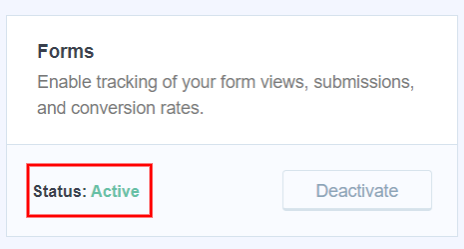Marketing is key for any business to reach its target audience and generate sales. The same holds true for websites and digital businesses as well.
However, blindly investing in marketing is not going to take a business anywhere in terms of progress.
The point is that people discover a website/business through a variety of sources. Your website can be popular on some of the sources because of the marketing strategies that are implemented, whereas there can also be leads from other sources as well.
It is essential that you are aware of and have detailed information about the sources that bring in leads to your website, and that is exactly what lead source tracking allows you to do.
What is Lead Source?
A “Lead Source” is a metric that helps to understand how a lead-generating visitor arrived at your website.
There can be several lead sources depending on the marketing strategies used by the business. Cold calls, emails, references from other businesses/websites, influencers, social media, search engines, PPC ads, or even traditional advertising methods such as television, radio, and billboards can all be sources that generate leads to a business/website.
What is Lead Source Tracking?
Lead Source Tracking, as you can guess by now, refers to the process of tracking the lead sources.
So, with the help of lead source tracking, you will know from where exactly a person got to know and reach your website.
A direct approach to lead source tracking is to enquire the visitor to your website about how they discovered the platform.
Another approach to lead source tracking is to utilize analytical tools that can help in intelligently tracking your leads and the source from which they come.
Why Should You Track the Lead Source?
Now that you know about the lead source and lead source tracking, the next most obvious question you might have is about the importance of lead source analysis.
Below I have listed out some of the key benefits of lead source tracking:
1. Discover Key Lead Generating Platforms:
One of the best advantages of lead source analysis is that it lets you discover the platforms that bring in quality leads. Thus, it helps you understand and focus more on the sources that bring in the most sales-converted leads.
2. Improve Your Conversion Rate
One of the best inherent advantages of knowing the best lead sources is that you can improve the sales statistics of your website. As you’re able to sell more with less effort, your conversion rate will keep soaring high.
3. Better-Optimize Marketing Campaigns
As you know of the sources for lead generation, you can better optimize the effort of your marketing team to develop marketing campaigns that put a larger effort on the platforms/sources with the best ROI.
4. Lower the Focus on Less Important Sources
Lead source analysis gives you a clear idea about the worst-performing sources as well. Well, it is not possible to generate a higher number of successful leads from all the platforms equally.
Thus, you can remove the worst-performing sources from your marketing campaign to efficiently channel your marketing funds.
5. Gives You an Edge Over the Competition
If you’re newly entering a highly competitive niche for selling, knowing about the sources where most of the sales happen gives you an edge over the competition. Thus allowing you to break into the market and start gaining sales.
Before we track the source of the leads in Google Analytics we must have leads tracking in place in our Google Analytics account.
Let me show you how to do it…
How to Track the Leads in Google Analytics?
Before I get into the steps to track leads in Google Analytics you must know what a lead means to your business? The definition of a lead can be different for different businesses.
For example:
For a Blogger a lead is when someone signs up to their email list.
For a B2B business, a lead when someone fills a form to signup for a free trial.
To track the leads on your website one of the easiest ways is to have a “Thank You” page on your website and set up Goals in Google Analytics.
Let me explain it in 2 simple steps:
Step I: Create a Thank You page & ensure the Signup Form redirects to that Thank You page
- To create a Thank You page, login into your WordPress Dashboard and go to the “Pages” section and click on “Add New”:
- When you create a Thank You page make sure to have it noindex, so that the search engines don’t crawl it.
Editor’s Note:
Thank You pages are considered as thin pages which are not good for SEO, neither they are useful if a user lands on it via a search engine so it’s best to keep them indexed. You can use any SEO plugin RankMath or Yoast, both have options to keep any page you want as indexed. By default, all pages are set to be indexed. The above screenshot is from RankMath.
- Install MailChimp plugin for WordPress so that you can capture the leads in the email marketing tool. I am using MailChimp as of now.
Now when anyone on my blog fills a form the lead will be captured and stored in my MailChimp account, and the user will be redirected to the thank you page I created.
Step II: Create “Destination” Goal in Google Analytics & add Thank You page to it
- To create a Goal in GA, click “Admin”
- Then, click “Goals”
- Then, click “New Goal”
- Then, select “Custom” and click on the “Continue” button
- Enter Goal name, select Goal type as “Destination” and click the “Continue” button
- Enter the path of the Thank You page and then click the “Save” button
Congratulations! Now you have lead tracking enabled on your site.
How to Track Leads Source in Google Analytics?
Once you have leads tracking enabled in Google Analytics, wait for at least 24-48 hours for some data to populate in Google Analytics.
Editor’s Note:
If your website doesn’t have many conversions it may take even more time to show the data in Google Analytics. It will only show the data once you have a conversion on your site.
Check Leads Source in GA with these simple steps:
- In GA, click “Conversions”, then click “Goals”, then click “Overview”, then click “Source/Medium”, then click “view full report”:
- Then, on the next screen click “Conversions”, then select the Goal whose leads source you want to check
I have selected “Goal 3: Registrations” and on the left-hand side you can see the Sources from where the leads were generated.
Please Note: The screenshots in the section “How to Track Leads Source in Google Analytics” are from the Google Analytics demo account.
How to Track Leads Source in MonsterInsights
You might be wondering, is it really necessary to track form conversions? Well, the answer is a big Yes. Conversion tracking is actually one of the most important website metrics because it lets you track the percentage of people that came on your website and converted into leads. And who wouldn’t want to know that, right? By tracking form conversions, you can analyze the efficiency of your marketing efforts and decide which process is working best for turning your visitors into customers. Now, let’s take a look at how to track leads source in MonsterInsights.
Step 1:
Firstly, you need to download the MonsterInsights plugin and connect it with Google Analytics.
Then under “Insights” button in your WordPress dashboard, click on “Addons” and then “install” the MonsterInsights Forms Addon.
Step 2:
Once you’ve installed the plugin, Then click on the “Activate button” to start using it.

That’s it you’re done, Congratulations!
To view your form conversion data, head over to the “Insights section” >> “Reports” and then click on the “Forms” tab.

5 Lead Source Tracking Best Practices
Lead source tracking might sound like the holy grail of digital marketing. However, any analytical data is only good if it is done in an efficient and effective manner.
Below are 5 best lead source tracking practices to help you increase the benefits from lead source analysis:
1. Don’t Avoid Offline Lead Sources
The digital world holds immense potential for marketing and lead generation. However, that doesn’t mean that the offline lead sources hold no value anymore.
When tracking lead sources, offline marketing sources are often omitted.
The traditional offline marketing channels such as television/radio advertisements, outdoor ads, conferences, brochures, etc. still hold great value in reaching potential customers.
2. Find and Remove Duplicate Lead Sources
Duplicate entries for the same lead source is a common issue, especially when there are multiple marketing campaigns running simultaneously. So, make sure to quickly find and remove duplicate lead sources to keep the data uncluttered.
3. Don’t Complicate Your Lead Sources
Always keep the lead sources simple, whether it be in naming or classification.
The meaning of lead sources is simple, they are the sources of the leads your website/business generate.
Over-complicating the data only makes it difficult to analyze the lead sources efficiently.
4. Don’t Change the Lead Source Value
It is common for businesses to have multiple marketing campaigns running simultaneously. Therefore, it is also common for the same prospective customer to reach your website through more than one source. However, once the source is assigned to a lead, it should not be changed even if the same lead responds through another source. The idea behind lead source tracking is to analyze the most effective sources and modifying the data for the same lead only makes the analytical data less useful.
5. Don’t Name the Lead Source Value the Same as Your Marketing Campaign
One of the common practices out there is to name a lead source value the same as the marketing campaign that focuses on the source.
This is a totally wrong practice. As time progresses, a marketing campaign can be scaled up to cover multiple platforms or can be withdrawn altogether.
By naming the lead source value the same as the marketing campaign, it only becomes to truly analyze and report the particular lead source as time progresses.
How to Measure Lead Quality?
As I mentioned in the beginning, very few of the generated leads convert into actual sales. Thus, lead source analysis doesn’t add any value to your marketing campaign if you don’t find quality lead sources.
Below are 5 metrics that can help you measure lead quality to better optimize lead source analysis:
1. Leads Generated Per Source
One of the basic criteria for a high-quality lead source is the actual number of leads it generates.
Not all platforms will generate an equal number of leads, and it largely depends on the type of product/services you’re selling as well as the specific marketing strategies that are opted.
2. Click Through Rate (CTR)
With respect to lead source tracking, Click-Through Rate refers to the number of impressions on a call-for-action that converted into actual clicks.
CTR can be easily calculated by dividing the number of clicks received by the total number of impressions. The resultant figure is the percentage of CTR that a lead source is offering.
A higher CTR means that more number of the targeted audience converted to leads.
3. Time to Conversion
It is essential to make sure that your leads are converted into customers in the least possible time. The “Time to Conversion” metric gives you a better understanding of how quick a lead from the given source converts into a sale.
To calculate the average time to conversion of a particular lead source, add up the time taken by each lead from the source to convert into sales and divide it by the total number of leads from the platform.
4. Conversion Rate
The conversion rate gives you an idea about the number of visitors to your website that ultimately becomes your customer.
If you wish to calculate the conversion rate, you can do so by dividing the number of sales received from a particular source by the total number of leads generated from the same source.
5. Cost Per Lead
The cost spent to generate each given lead is referred to as “Cost Per Lead”. The lower CPL a given source has, the better it is for your website/business in terms of ROI.
Calculating the cost per lead is easy. All you need to do is divide the total amount of money spent on a given source with the total number of leads generated from the same source.
Lead Source Tracking: How Efficient Is It?
Digital marketing is becoming highly competitive these days. With companies and brands dedicating most of their funds and resources to improve digital marketing, it is essential to utilize all possible techniques and analytical tools to improve the efficiency of marketing techniques.
Lead source analysis is one of the best and highly effective methods to optimize and funnel\ the resources and budget to the sources that can generate the maximum leads and conversions.
When lead source analytics data is combined with engaging marketing techniques, the results can be really effective to improve sales and build a loyal customer base.






Hi Vineet, thank you for the step-by-step instructions on how to do this! I can’t wait to try it out. So much has changed with GA and this will really help me!
The better we can track our stats the better we can help others along the way.
very informative. I haven’t utilized Google Analytics, but you’ve made a good case for why I should be. I do have a somewhat abandoned site/blog on WordPress, but have been moving to Groove.cm. So, I’ll have to re-read closely to see if I can implement in wordpress and then duplicate that in Groove.cm.